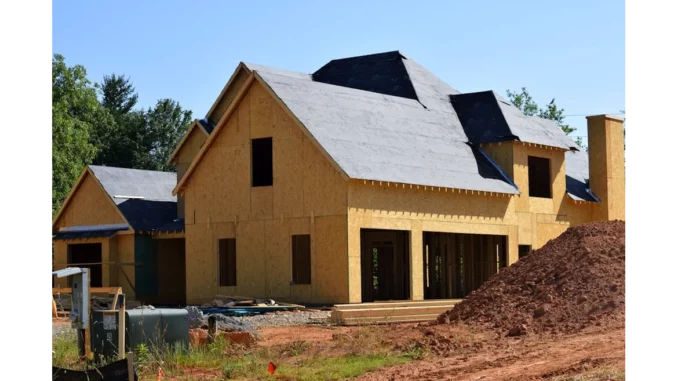
When it comes to managing construction risks in the United Kingdom, the landscape is as diverse as it is intricate. Recently, I had the opportunity to sit down with Michael Henderson, a seasoned risk manager with over two decades of experience in the UK construction industry. As we delved into the specifics of managing construction risks, Michael shared valuable insights and practical steps that can significantly influence project outcomes.
Focus360 Energy: property compliance services – pre-planning to post-construction. Learn more.
“The UK construction industry is unique,” Michael began, as we sipped our coffee in a bustling London café. “Here, Design and Build procurement is still a prominent model, but we also see other methods like Construction Management and Build Contracts being used.”
Michael explained that each procurement model comes with its own set of risks and challenges. “In Design and Build, the contractor takes on a lot of responsibility. They design the project and construct it, which can streamline the process but also introduces risks related to design flaws or construction delays.”
To effectively manage these risks, Michael outlined seven essential advisory steps that he regularly employs. These steps provide a roadmap for navigating the complexities of construction projects in the UK.
1. Comprehensive Risk Assessment
“The first step is always a thorough risk assessment,” Michael said. “We need to identify all potential risks early on. This includes everything from financial risks and safety hazards to environmental concerns and legal issues.”
Michael emphasised that a comprehensive risk assessment allows project stakeholders to understand the full scope of potential problems. “It’s about looking at the entire risk profile and not just focusing on a single aspect,” he added.
2. Stakeholder Engagement
“Engaging all stakeholders is crucial,” Michael continued. “This means involving the client, contractors, designers, and even local authorities from the very beginning.”
By ensuring that everyone is on the same page, misunderstandings can be minimised, and collaborative solutions can be developed. Michael pointed out that this collaborative approach is especially important in the UK, where projects often involve multiple parties with diverse interests.
3. Tailored Risk Mitigation Strategies
“One size doesn’t fit all when it comes to risk mitigation,” Michael said with a knowing smile. “Each project is unique, and so are its risks. We develop tailored strategies to address specific challenges.”
These strategies might include anything from implementing advanced safety protocols to securing specialised insurance products. “The key is to be proactive rather than reactive,” Michael stressed.
4. Regular Monitoring and Review
“Once the project is underway, regular monitoring and review are essential,” Michael noted. “Risks can evolve, and new ones can emerge. We need to stay vigilant and adapt our strategies as needed.”
Michael shared an anecdote about a recent project where unexpected ground conditions threatened to derail the schedule. “Because we had a robust monitoring system in place, we were able to quickly identify the issue and implement a solution before it caused significant delays.”
5. Effective Communication
“Communication is often underestimated, but it’s one of the most critical aspects of risk management,” Michael said. “Clear, concise, and regular communication helps ensure that everyone is aware of potential risks and the steps being taken to mitigate them.”
In the UK construction industry, where projects can be highly complex and involve numerous stakeholders, effective communication can make the difference between success and failure.
6. Utilising Technology
“Technology has revolutionised risk management,” Michael observed. “From Building Information Modelling (BIM) to advanced data analytics, we now have tools that can provide real-time insights and predictive analytics.”
Michael highlighted how these technologies can help identify potential risks early and provide data-driven solutions. “Embracing technology is no longer optional; it’s a necessity in today’s construction landscape,” he asserted.
7. Continuous Learning and Improvement
“Finally, continuous learning and improvement are vital,” Michael concluded. “The construction industry is always evolving, and so should our risk management practices.”
Michael encouraged industry professionals to stay updated with the latest trends, regulations, and best practices. “Learning from past projects, both successes and failures, can provide valuable lessons that help improve future outcomes.”
As our conversation drew to a close, it was clear that Michael’s approach to managing construction risks was both comprehensive and pragmatic. His emphasis on a holistic view, tailored strategies, and continuous improvement resonated as practical advice for anyone involved in the UK construction industry.
“Ultimately, managing construction risks is about preparation and collaboration,” Michael said, offering a final piece of wisdom. “By taking a proactive and inclusive approach, we can navigate the challenges and seize the opportunities that come our way.”
For those looking to enhance their risk management practices in the UK construction industry, Michael’s insights provide a valuable guide. His experience and expertise underscore the importance of a structured and adaptive approach to managing risks in an ever-evolving landscape.
Emily Thompson


Be the first to comment